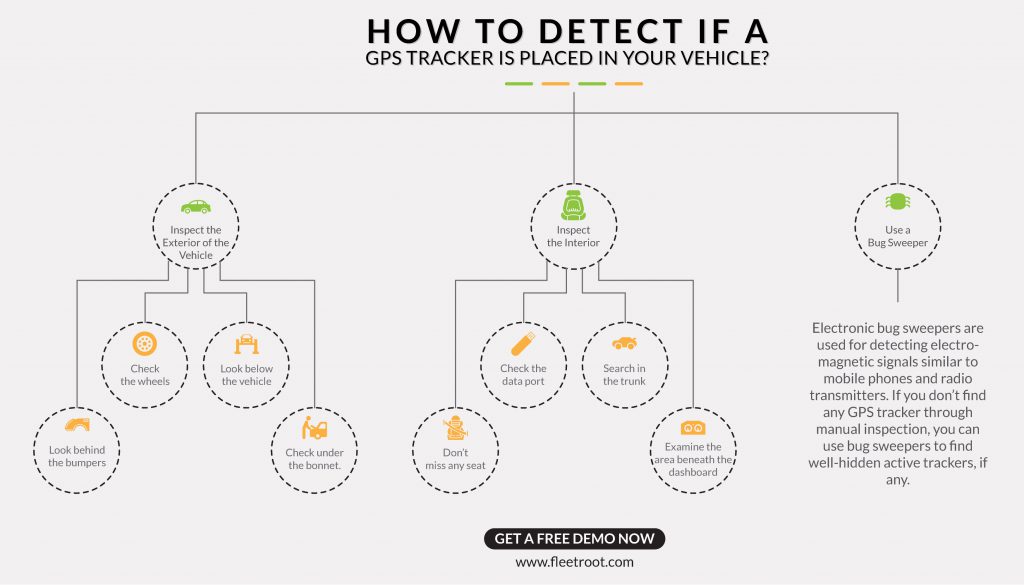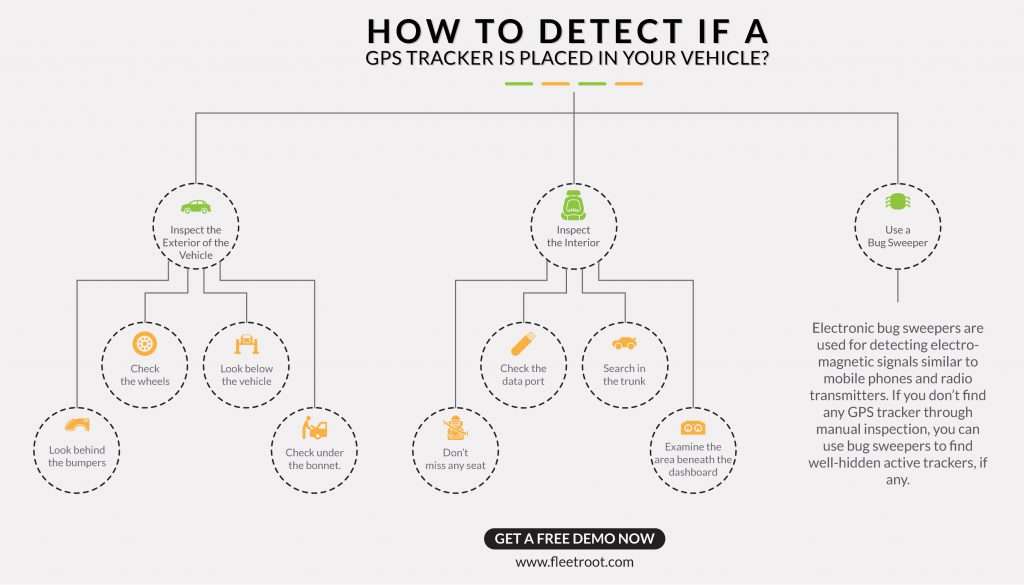- Why Should You Care About Hidden GPS Trackers?
- What Do Modern GPS Trackers Look Like?
- Step-by-Step: How to Find a Hidden GPS Tracker
- What to Do If You Find a Tracker
- Legal Considerations in 2025
- Preventing Future Tracking
- Frequently Asked Questions
Ever get that creepy feeling someone might be tracking your every move? In today’s connected world, GPS trackers have become smaller, cheaper, and scarily easy to hide in vehicles. Whether it’s a suspicious partner, a nosy employer, or even a car thief casing your ride, unauthorized tracking is more common than you’d think. This comprehensive guide walks you through exactly how to find these sneaky devices, what to do if you discover one, and how to protect your privacy moving forward. We’ll cover everything from manual inspection techniques to high-tech detection tools, plus the legal implications you need to know about in 2025.
Why Should You Care About Hidden GPS Trackers?
GPS tracking technology has evolved significantly in recent years. What were once bulky, easily noticeable devices can now be as small as a matchbox and operate for months on a single charge. Vehicle security professionals report a concerning trend: unauthorized tracking cases, particularly in domestic disputes, have been rising by approximately 30% annually.
The most alarming aspect? Many individuals remain unaware they’re being monitored until the situation escalates. I gained firsthand experience with this when a client began appearing at all my lunch locations “coincidentally.” After some investigation, I discovered they had attached a magnetic tracker beneath my vehicle’s bumper following our initial meeting. This unsettling experience provided me with practical knowledge about detecting hidden trackers, which I now want to share with you.

Modern GPS trackers pose several significant risks:
- Privacy invasion: Your daily movements and routines can be monitored without consent
- Safety concerns: Stalkers or criminals can use trackers to locate you or your vehicle
- Legal implications: Unauthorized tracking may violate privacy laws in many jurisdictions
The compact size of current tracking devices makes them particularly difficult to detect. Some models measure just 2-3 inches in length and can be concealed in numerous locations throughout a vehicle. Battery life has also improved dramatically, with some units operating for 6-12 months without requiring a recharge.
Being aware of this technology and knowing how to identify potential tracking devices is crucial for maintaining your personal privacy and security. In the following sections, we’ll explore practical methods for detecting and removing unauthorized trackers from your vehicle.
What Do Modern GPS Trackers Look Like?
Modern gps tracking devices come in various forms tailored for different surveillance needs. Recognizing these devices can help you spot potential unauthorized monitoring of your vehicle.
These typically feature:
- Compact dimensions similar to a smartphone
- Durable, weather-resistant exteriors
- Internal power sources lasting several months
- Data transmission capabilities via cellular networks
- Various mounting options including adhesive pads
These plug-in units are particularly discreet because:
- They interface directly with the vehicle’s computer system
- They require no separate power source
- They often mimic factory-installed electronics
- Some versions include flexible connectors for hidden placement
The most advanced options include:
- Professional installation within vehicle structures
- Direct connection to the electrical system
- Minimalist rectangular or circular designs
- Integration with existing vehicle wiring
- Concealment behind interior panels or under hood components
Contemporary tracking units have achieved remarkable miniaturization, with the most compact versions being smaller than a credit card. Many feature durable housings that resemble standard automotive parts.
When examining your vehicle, look for any unusual components attached with:
- Specialized mounting hardware
- High-strength bonding materials
- Custom fastening systems
- Non-standard electrical connections
The technology continues to advance, with high-end models incorporating intelligent power management that activates only during vehicle operation, enhancing their stealth capabilities.
Step-by-Step: How to Find a Hidden GPS Tracker
Discovering a hidden GPS tracker on your vehicle requires a systematic approach. Here’s my proven method, developed through years of hands-on experience:
1. The Visual Inspection
Begin with a comprehensive exterior examination. I recommend using a high-powered flashlight and an extendable inspection mirror – the kind mechanics use. Pay special attention to these critical areas:
- Under the vehicle: Run your hands along metal surfaces, especially in shadowed areas where visual inspection might miss something.
- Wheel wells: Check behind plastic liners where small devices can be wedged.
- Bumpers: Examine hollow cavities that make ideal concealment spaces.
- Engine compartment: Focus on the battery area, fuse box, and wiring harnesses.
2. Interior Checkpoints
If the exterior yields nothing, move inside the vehicle:
- Diagnostic port: Located under the dashboard, this is a common installation point for plug-in devices.
- Seating areas: Feel along seat rails and beneath cushions.
- Storage compartments: Examine the back wall and underside thoroughly.
- Cargo areas: The spare tire well and side panels are favorite hiding spots.
3. Electronic Detection
For more sophisticated searches, these tools can be invaluable:
| Tool | Function | Recommendation |
|---|---|---|
| Signal detectors | Identifies transmissions from active devices | Professional-grade models provide best results |
| Magnetic sensors | Detects magnetic attachments | Mobile applications offer basic functionality |
| Thermal imagers | Spots heat signatures from operating electronics | Useful for locating warm components |
Remember, thoroughness is key. Take your time and be methodical in your examination process.
What to Do If You Find a Tracker
Discovering an unauthorized GPS tracker on your vehicle can be unsettling, but taking systematic action will help you regain control of your privacy. Here’s a detailed guide on handling the situation:
- Take clear, timestamped photos from multiple angles before touching the device
- Note the exact location where you found it (e.g., “rear bumper, driver’s side”)
- Record the date and time of discovery
| Type | Characteristics |
|---|---|
| Battery-powered | Usually magnetic, self-contained unit with visible batteries |
| OBD-II | Plugged into diagnostic port under dashboard |
| Hardwired | Wires connected to vehicle’s electrical system, often hidden |
- Battery-powered: Simply detach (wear gloves if concerned about fingerprints)
- OBD-II: Firmly pull straight out from the port
- Hardwired: Consider professional help to avoid electrical damage
- Store in a Faraday bag or aluminum foil to block signals
- Keep any packaging or accessories found with it
- Maintain chain of custody if considering legal action
- Contact local law enforcement if you suspect stalking
- Consult an attorney about potential civil actions
- Notify your insurance company if vehicle damage occurred
Remember that your reaction should match the severity of the situation. While finding a tracker is concerning, staying calm and methodical will yield the best outcome. If you’re unsure about any step, consulting a professional investigator or automotive technician can provide peace of mind.
Legal Considerations in 2025
Understanding the legal landscape surrounding GPS tracking is crucial as technology continues to evolve. While laws vary by state, some fundamental principles remain consistent across the United States:
- Consent is key: Tracking someone else’s vehicle without permission violates privacy laws in all 50 states
- Penalty spectrum: Consequences range from misdemeanors to felonies depending on intent and circumstances
- Law enforcement requirements: Police need warrants for GPS tracking following Supreme Court rulings
- Parental rights: Parents can legally track vehicles driven by minor children
Privacy attorney Lisa Chen observes, “We’ve witnessed a 40% surge in GPS tracking-related cases since 2023. Many victims don’t realize they have legal options available to them.” This increase highlights the growing need for public awareness about tracking laws.
| Tracking Scenario | Legal Status | Potential Consequences |
|---|---|---|
| Tracking your own vehicle | Legal | None |
| Employer tracking company car | Legal with disclosure | None if properly disclosed |
| Tracking spouse’s car without consent | Illegal | Varies by state (fines to jail time) |
| Private investigator without consent | Generally illegal | Civil and criminal penalties |
Several states have enacted specific legislation addressing GPS tracking. For example, Colorado’s Vonnie’s Law classifies unauthorized tracking as stalking in certain circumstances. The penalties can be severe, ranging from substantial fines to significant jail time depending on the situation.
If you discover an unauthorized tracker on your vehicle, it’s important to document everything before removal. Take clear photos of the device in place, note its location, and consider filing a police report. These steps create a paper trail that could be valuable if legal action becomes necessary.
While technology continues to advance, the basic principle remains: you have a right to privacy in your personal vehicle. Understanding these laws helps protect that right while ensuring you don’t inadvertently violate others’ privacy either.
Preventing Future Tracking
Maintaining vehicle privacy requires consistent effort after discovering unauthorized tracking. Implement these protective measures to safeguard against future intrusions:
- Scheduled Physical Checks: Establish a routine examination of potential hiding places including undercarriage components, interior crevices, and electronic ports. Maintain specialized inspection tools in your vehicle for convenience.
- Parking Security Enhancements: Prioritize monitored parking locations with security presence. For sensitive situations, consider alternating parking patterns and locations to disrupt potential surveillance.
- Key Management Protocols: Implement controlled access systems for vehicle keys, particularly in shared-use situations. Digital key logs can help track access patterns.
- Advanced Signal Detection: Quality signal detection equipment varies significantly in capability. Consider these options:
| Detection System | Advantages | Limitations | Investment Level |
|---|---|---|---|
| Entry-Level Scanner | Budget-friendly, easy operation | Basic functionality | $50-$150 |
| Mid-Range Detector | Broader frequency coverage | Requires some technical knowledge | $150-$300 |
| Professional System | Comprehensive detection | Specialized operation needed | $300+ |
- Install 24/7 monitoring systems with vehicle motion alerts
- Implement vibration-sensitive security devices
- Use visible anti-theft devices as deterrents
- Monitor electrical system performance regularly
One acquaintance identified suspicious activity through consistent battery performance monitoring, highlighting the importance of attention to vehicle behavior patterns.
Balancing vigilance with practicality is essential. For persistent concerns, professional security assessments can provide tailored solutions and advanced detection capabilities beyond consumer-grade equipment.
Frequently Asked Questions
How can I tell if my car has a GPS tracker without looking?
Watch for unexplained battery drain, unusual electronic interference, or people knowing your location without being told. These can indicate a hidden tracker.
Are GPS jammers legal to use?
No. While tempting, gps jammers are illegal nationwide and can carry heavy fines. They also interfere with emergency communications.
How long do battery-powered trackers last?
Most last 2-6 months on a charge. High-end models now boast up to 12 months with ultra-low-power modes.
Can dealerships install trackers without telling me?
Only if disclosed in your purchase/lease agreement. Many dealers now use them for inventory management but must remove them upon sale.
What’s the most unusual place you’ve found a tracker?
Inside a hollowed-out emergency flare in a trunk toolkit. The owner was a former spy who should’ve known better!
